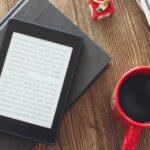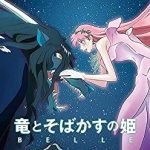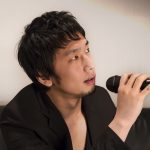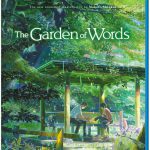Summary and Review of Suzume no Tojimari

I watched Suzume no Tojimari by Makoto Shinkai right after it was released here in Japan.
I heard both reputation, great and not great.
As for me, good but so so.
Of course, animation was great like other films by Makoto Shinkai.
And I heard many people said this is a great film and there were people even crying and I also understand it.
Still, my real expression was so so.
Here I introduce summary of Suzume no Tojimari and my real impression
※This article includes spoiler, so if you do not want, I’m glad you come back here after watchin Suzume no Tojimari
- 1. Summary
- 2. Theme is Great East Japan earthquake
- 3. Existence of Ushirodo Back Door
- 4. Relationship Between Suzume, Daijin and Tamaki
- 5. Similarity Between Ghibli and Suzume no Tojimari
- 6. Ittekimasu, Tadaima and Okaeri
- 7. My Review for So So Point
- 7.1. Extra Word and Explanation
- 7.2. Life is Not Such Simple Thing for Some People
- 8. My Review for Good Point
- 8.1. Meaning of Lament
- 8.2. Happiness in an ordinary life
- 8.3. Rescued Both Sides
- 8.4. Confronting Past
- 8.4. Resolution of Makoto Shinkai
Summary
Suzume, who is a high school girl, met with a Souta on her way to school.
He asked her abandoned buildings around here.
She told him the place and went to school but she returned in the middle to look for him.
She felt like she met with him somewhere before.
In the abandoned tourist spot, she found a door standing in the middle of a pond.
She opened the door to see a completely different scene spread right in front.
But it disappeared the moment he went through the door.
She also found a sculpture stood right in the back of the door and pulled it out from the ground.
It turned into a cat and run away.
She was scared of all the things happened here and dashed back to the school.
At the school, she could see a giant black thing coming up into the sky from the ground through the window.
Suzume run out of the school to the place black thing came up.
It was the place she found a door and she could see Souta pushing back the door, which spewing the black thing.
Suzume helped him and closed up the door.
Souta told her this door appears in abandoned places as the root of the evil.
He was a Tojishi (master to close this door) and travelling all over Japan to contain disaster.
This was the beginning of one of the disasters to happen.
Suzume and Souta travel Japan together to find the door and contain the root of the evil.
Theme is Great East Japan earthquake
The theme is apparently Great East Japan earthquake.
Suzume was the victim of Great East Japan earthquake.
The scene she saw through the door first was her home town in northeast Japan.
You could also hear The Earthquake Early Warning blaring out many times in the film.
Mimizu was the calamity which causes earthquake and Souta needed to shut the door to contain the disaster.
Existence of Ushirodo Back Door
What was meaning of Ushirodo (Back Door)?
We know that’s the cause of the calamity?.
But we need to focus more on the background.
It appears only in the abandoned places.
Theme park, tourist spot, etc. where people once enjoyed many things there.
Those places were left behind.
Ushirodo Door appears in the place our relationship and connection are fading.
Makoto Shinkai tells we have funeral to lament for humans but we don’t have the same thing for places such as town, them park, tourist spot, etc.
Lament things and to confront yourself such kind of thing Ushirodo Door reflects.
Relationship Between Suzume, Daijin and Tamaki
Daijin had a role of containing disaster but he turned into a cat after Suzume pulled out him from the ground.
When Suzume found him again she said “Do you wanna become my cat?”
He became cheerful and said “I like Suzume”.
But Suzume came to misunderstand Daijin as a bad cat after containing disaster in many places.
She thought Dajin was the one causing all the disasters and said “I don’t like you” in the end.
Daijin depressed and became a skinny cat.
It is like a relationship between Suzume and Tamaki.
Tamaki took care of Suzume after Suzume lost her mother in the great earthquake.
But Suzume runs out of the house and travels around Japan with Souta.
Tamaki sends many messages to Suzume and finally go to Tokyo to find her.
She tried to get her back home but Suzume rejected.
Finally, Tamaki tells all the things she couldn’t try just to spare time for Suzume and shouts “Give me back my time”.
Suzume got a big shock like the case of Daijin.
Suzume and Tamaki, both of them said “Don’t you become my cat (daughter for Suzume)?” first.
That’s their word and their choice.
But both of them said “I don’t like you (Give me back my time for Tamaki)” later.
For her, Suzume was the one who took away her freedom and a chance of marriage.
Daijin also took away Souta from Suzume by turning him into a chair.
In the end, both of them (Suzume and Tamaki, Suzume and Daijin), made up.
They learned many things through the experiences.
Similarity Between Ghibli and Suzume no Tojimari
I can say some images are from Ghibli.
If you are a Ghibli fan, you would notice easily.
First one is an abandoned spot.
When Suzume was walking around the spot it reminded us of the Spirited Away.
Chihiro and her parents in Spirited Away wandered into an abandoned town and Chihiro’s parents turned into pigs.
Their depictions are similar.
Mimizu, the cause of calamity, is also reminds us of Daidarabotchi in Princess Mononoke.
Daidarabotchi is also huge, no face, like liquid and fallen in the end.
To me, even the Souta looked like Howl of Howl’ Moving Castle.
They both had a long hair, good-looking and calm character.
I think Makoto Shinkai took some images of Ghibli to use in his film.
Actually, Makoto Shinkai respects Hayao Miyazaki, that I understand it.
Ittekimasu, Tadaima and Okaeri
Ittekimasu means I’m going, Tadaima is I’m home and Okaeri means Welcome back.
Everyday among family members, we say those phrases in Japan.
I know saying these words everyday is a bit unfamiliar in other countries but it makes us feel comfortable like we are fine and live without problem today.
They are just simple words we could say freely everyday but suddenly lost forever.
That’s the great earthquakes.
For those, who lost family members in the disaster, they can never hear Okaeri or say Ittekimasu and Tadaima to them.
We know how great thing it is, just we are able to say those simple phrases after things happened.
Suzume said “Ittekimasu” in the last scene.
That’s the word she couldn’t say since the great earthquake.
When Souta came back in the end, she said “Okaerinasai”.
That’s the word she wanted and could say it for someone special now.
My Review for So So Point
To tell you the truth, my impression was good but so so.
I know there were many people who said this was a masterpiece of Makoto Shinkai’s film.
But somehow, it was not like that to me.
Extra Word and Explanation
For example, when Suzume first saw Souta, she said “Beautiful”.
But I felt like not so beautiful.
Rather, did she need to say that word?
Do we say like beautiful when we are really impressed with someone or something?
If she didn’t speak anything and just looked at him with a stunned face, I felt much more that she was attracted by him.
Some other reviewers say most of all the characters speak too much like explaining each things.
Why Makoto Shinkai didn’t trust us, we can understand things without extra words, some said.
Life is Not Such Simple Thing for Some People
In the end, Suzume got over the past by confronting herself.
It was a happy ending and I certainly like it, too.
But I also felt like life is not so simple for everybody.
Certainly there are people who can get over things even if they lose someone special.
That’s really great thing.
But not all the people are like that, not everybody is that strong.
No matter how hard we try to confront, even if we understand that we have to get over it to step forward, there are things we could never control.
Reality took me back to a real world.
Happy ending was great but I also felt it became much deeper if this point was included even a little in the film.]
My Review for Good Point
There were also many good points.
In this film, I felt the determination of Makoto Shinkai, especially.
Meaning of Lament
Makoto Shinkai wanted to pick up abandoned places people left behind.
We have funereal for a human but not for a abandoned place once people gathered and enjoyed things.
Such kind of place is the spot Ushirodo back door appears and causes the calamity.
This is the metaphor of fading relationship.
It might among people or between people and things.
I would say both.
Ushirodo is certainly the cause of calamity but inform us of the things we need to remember.
Happiness in an ordinary life
In the last scene, we can hear these words,
Ittekimasu (I’m going), Itterasshai (Have a nice day), Tadaima (‘m home) and Okaeri (Welcome back).
These are the words people say everyday in Japan.
Nothing special but we notice how important an ordinary life is in which we are able to say these casual greetings.
You don’t know what you’ve got until it’s gone
I felt that was great Suzume and others around her could say these words again with smile.
Rescued Both Sides
In the last scene, Suzume had to choose which to save, Souta or others.
To stop Mimizu (the cause of calamity), she had to leave Souta as he was in another world.
That means she has to abandon him forever as a human sacrifice.
If she rescue Souta, Mimizu causes great earthquake and thousands of people die in real world.
In the previous anime film Weathering with You, Hodaka (main character) chose to save Hina (Heroin).
As a result, others suffered and if it was real, thousands of people must have lost their lives.
In Suzume no Tojimari, Suzume couldn’t choose but Daijin appeared and said he being the sacrifice to stop the disaster.
She could save both Souta and others with the help of Daijin.
I think many people feel sad about Daijin but he had the role to contain Mimizu originally from the first.
He just returned to the place where he had been.
Still, we need to remember Daijin’s role.
Confronting Past
Suzume and Souta kept shutting back door of the calamity.
But Suzume had also been shutting her door.
That was the memory at the time of Great East Japan earthquake.
She could not confront her past as it was too tough memory to remember.
This time she opened the door to the another world voluntarily to find her child self.
4 year-old, little Suzume was crying after the earthquake, looking for her mother.
She asked Suzume “Who are you?”.
Suzume told her no need to worry as you grow up in the bright light.
And says “I’m you, tomorrow of Suzume”.
After coming back to the real world, Suzume murmurs “I’ve already gotten all the important things long time ago”.
She got over her fear and confronted herself.
And found that she had all the answers in herself, not outside.
This is great thing.
It sounds like contradiction as I said before that life was not so easy, not anyone is that strong like Suzume.
Still, confronting something is very important.
The thing is not if you can get over it or not.
To look back and talk to yourself and I feel we can find the answer naturally.
Resolution of Makoto Shinkai
I said the story was so so but this point was sure I felt strong determination of Makoto Shinkai.
The theme of earth quake is very sensitive, especially to those who had been suffered real great earthquake and lost family members and friends.
It left deep mental scars on victims.
Even I, who didn’t suffer the great earthquake, got a shock when the The Earthquake Early Warning blaring out in the film.
It was just scary as we had a chance to hear the big sound blaring out from the phone right before a big earthquake occurred although it was rare and not so many.
I’m sure Makoto Shinkai considered this point many times and decided to pick up as the theme.
In an interview, he said that creating something and releasing it itself include violence no matter how much we try to avoid it.
It shakes others’ feelings strongly.
Whether it is a novel or film, that’s same.
Making a film without hurting anyone means just not touching the point deep down in our heart which we do not want others to touch.
He says making a film no one gets hurt can not move others’ heart.
He knew there are certainly people who get heart by watching this film, still he decided to make.
I respect his determination.
Official Website
https://suzume-tojimari-movie.jp/
YouTube Video
https://youtu.be/8zGz4z3bdzg
Source of Quotes
https://suzume-tojimari-movie.jp/ (Director : Makoto Shinkai)
Meaning of Suzume no Tojimari in English
Your Name Kimi no Na wa Movie of Makoto Shinkai became a Mega Hit
The Garden of Words (Kotonoha no Niwa): Beautiful Tanka (Poem) and Quotes












